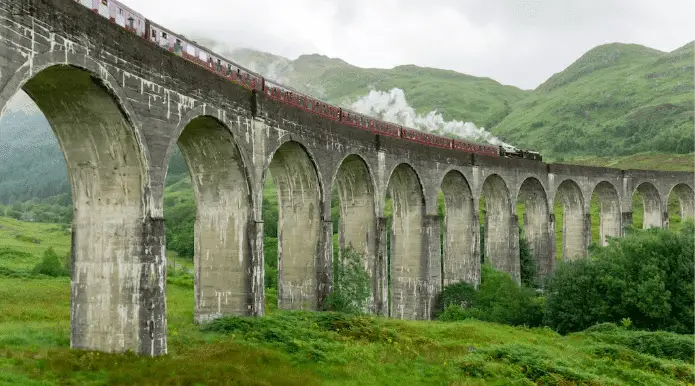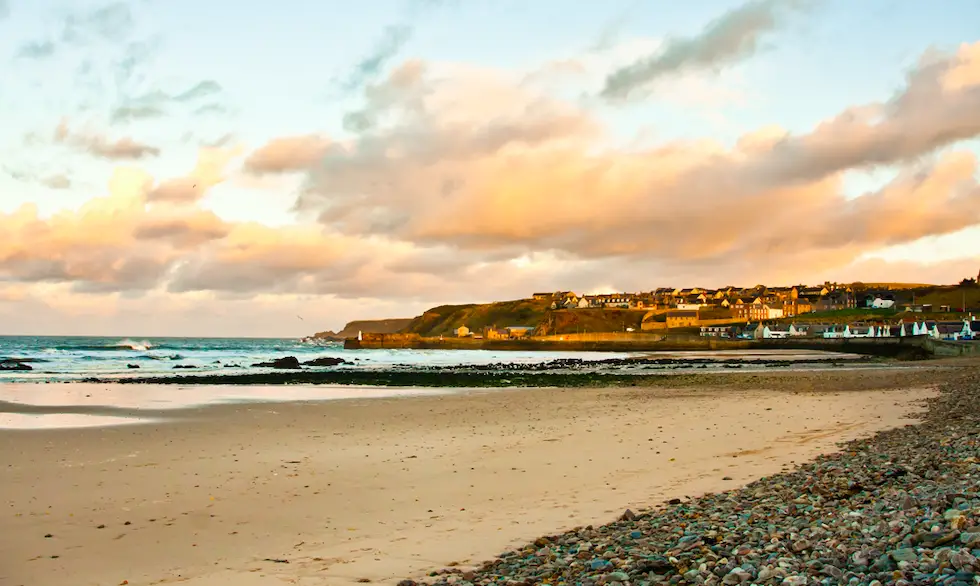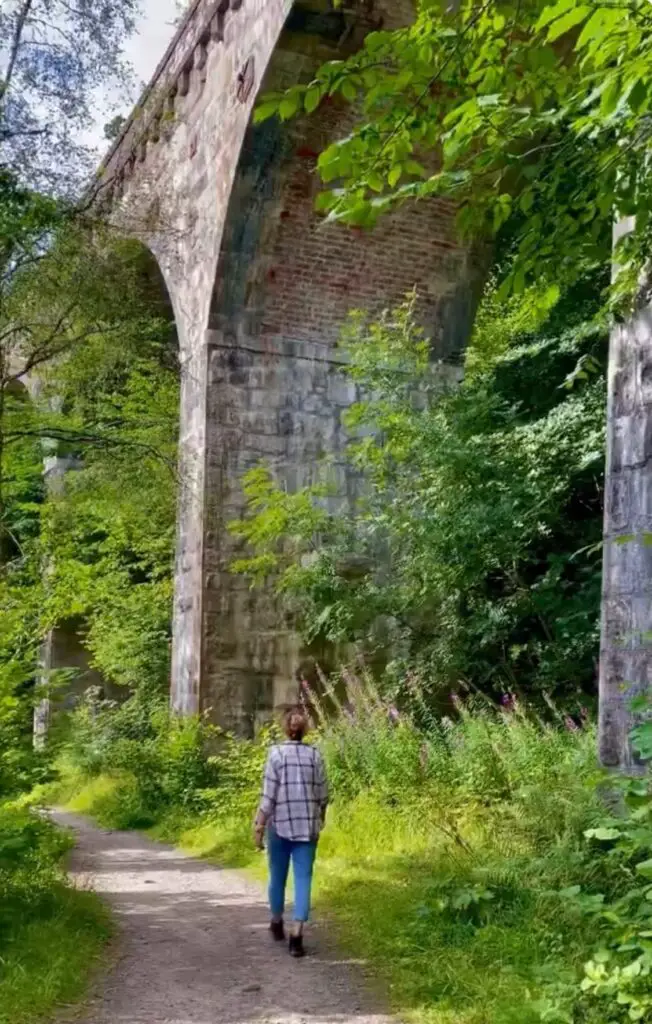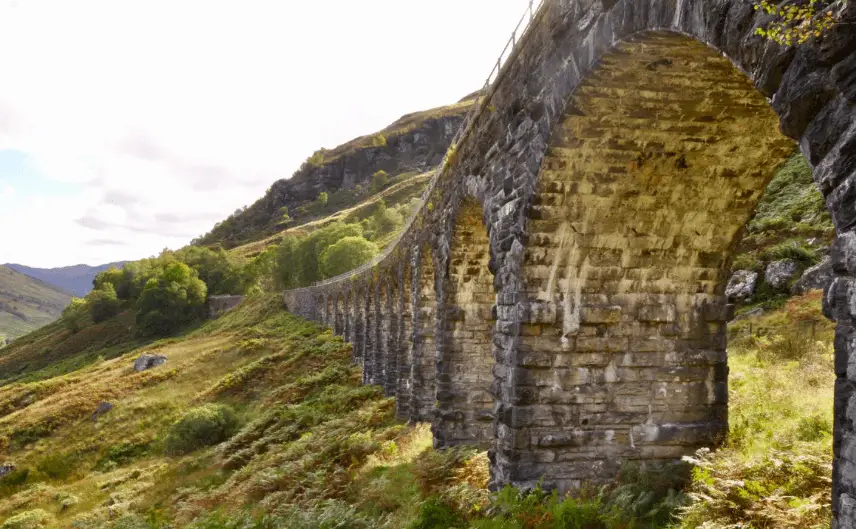The 10 Best Scottish Railway Viaducts To Visit
During the 19th century, many viaducts were built in Scotland due to the expansion and demand for railway lines. This post lists the best Scottish Railway Viaducts.
Discover the viaduct that is still in use, which ones have the best scenic views and which viaducts have been used as filming locations.
Many of the viaducts are not in use today. Some are out of bounds and can be only viewed from a distance.

Glenfinnan Viaduct
The Glenfinnan Viaduct is a railway viaduct located on the West Highland Line in Glenfinnan. Glenfinnan is located on the west coast of Scotland between Fort William and Mallaig.
The Viaduct was built between 1897 and 1901. Glenfinnan Viaduct looks over Loch Shiel and Glenfinnan Monument.
The bridge has 21 arches and stands 381 metres long. The West Highland Line currently has trains running along this line, connecting Fort William to Mallaig.
You can park at the Glenfinnan Viaduct Car Park and follow the trail to get a great view of the viaduct. If you are extremely lucky or plan your trip super well, you can catch the Jacobite Steam Express train to go over the viaduct.
This viaduct is most well known for appearing in scenes from the Harry Potter movies. In addition, the viaduct has been a location for many films and TV series including The Ring of Bright Water, Charlotte Gray, Monarch of the Glen and The Crown.
Moreover, the Glenfinnan Viaduct features some Scottish banknotes. In 2007, Glenfinnan Viaduct appeared on the £10 notes.
This bridge is definitely the most popular viaduct in Scotland and is the most photographed bridge in Scotland.

Cullen Viaduct
In 1886, the Great North of Scotland Railway opened it’s through line along Moray Coast. The railway line connected Portsoy to Elgin.
One of the most impressive sections of this railway line is at Cullen Viaduct. The viaduct has eight arch rings, one of the longest viaducts along the Great North of Scotland Railway Line route.
The line closed in 1968 and parts of the line are now part of the coastal walking routes including the Moray Coast Trail. It is an unforgettable feature of the town, with Seatown tucked underneath it.
The bridge is constructed of bull-faced rubble and was engineered by P.M Barnett in 1886. It is an amazing piece of architecture and a true hidden gem.

Killiecrankie Viaduct
Killiecrankie Viaduct is a 10-arch railway viaduct which runs 109 yards (100 metres) along the north-east bank of the River Garry. The viaduct was built in 1863 from a design by Joseph Mitchell.
The viaduct was constructed for the Inverness and Perth Junction Railway. At the time, the total cost for the viaduct was £5,730.
Knowing the the 10 arches structure is over 160 years old makes you marvel at the skill of the builders. The location of the viaduct is so unique as it is in a rural location.
Viewing the Viaduct up close is possible by visiting the Killiecrankie Visitor Centre and the nearby Soldier’s Leap. General George Wade Road is above, with the A9 above again.
There are so many things to do in this area of Perthshire, follow this link for some great ideas.

Glenogle Viaduct
Glenogle Viaduct can be seen from the A85, heading north from Lochearnhead. The viaduct is located in Loch Lomond and the Trossachs National Park.
The viaduct was built between 1866 and 1870. Interestingly, the design was for 20 arches, but the bridge was built with 12 stone arches.
Visitors can walk through the glen on a footpath that follows the course of the former Callander and Oban Railway to the summit of the Glen and Killin junction.
On this walking route, you can cross the Glen Ogle Viaduct as it is now disused. The viaduct is located on the eastern hillside of Meall Reamhar and Scorrach Nuadh.
In addition, the long-distance walking path – Rob Roy Way goes over the Glenogle Viaduct.
Leaderfoot Viaduct
The Leaderfoot Viaduct is also known as the Drygrange Viaduct. This viaduct runs over the River Tweed in Melrose in the Scottish Borders.
Leaderfoot Viaduct stands 126 feet from the floor of the river valley. Parking can be found in the nearby Old Melrose Tearoom, from there walk over Drygrange Bridge to get superb views of the viaduct.
In 1863, the viaduct was opened to carry the Berwickshire Railway, connecting Reston and St Boswells. Charles Jopp and Wylie and Peddie were the engineers behind this viaduct.
In the early, 1980, the viaduct was in poor condition and was so close to being demolished. The viaduct became a Category B to A listing in 1986 and Historic Scotland took over the structure from British Rail in 1996.
Culloden Viaduct
Culloden Viaduct is a bridge on the Highland Main Line, located to the east of the city of Inverness.
Culloden Viaduct is also known as Nairn Viaduct, Culloden Moor Viaduct or the Clava Viaduct. Two important attractions are located nearby: Culloden Battlefield and Clava Cairn.
The viaduct was designed by Chief Engineer Murdoch Paterson. In 1898, the viaduct opened as part of the Inverness and Aviemore Direct Railway.
Culloden Viaduct has 29 arches that span across the wide valley of River Nairn. In addition, the viaduct stands at 1800 feet (549 metres), making it the longest masonry viaduct in Scotland.
As of 2023, the viaduct is still in use. Culloden Moor Railway Station is located at the northern end of the railway, however, the station closed in the 1960s.
You are able to drive underneath the viaduct, however, the roads are narrow here and parking is limited. Overall, this is a stunning example of Victorian engineering.
The Jacobite Steam Train service runs during the summer seasons.
Ballochmyle Viaduct
Ballochmyle Viaduct is the tallest railway viaduct in Britain standing at 52 metres (169 feet) high. The viaduct goes over the River Ayr near Mauchline and Catrine in East Ayrshire.
Ballochmyle Viaduct formerly carried the Glasgow and South Western Railway line between Glasgow and Carlisle. The viaduct was built in 1840 for the Glasgow, Paisley, Kilmarnock and Ayr Railway Company.
The designer behind the viaduct is John Miller. Red sandstone sourced from Dundee was used for the arch rings.
Ballochmyle Viaduct became listed in April 1971 and in 2014, it was designated ‘Historic Civil Engineering Landmark” by the Institution of Civil Engineers.
The nearby overgrowth of vegetation conceals the main arch, especially in the summer. However, the gorge is a highly impressive feature and you can explore the maze of paths around the viaduct.
An interesting fact: Mission Impossible was filmed here. From South Lodge, it is a 10-minute walk to the viaduct on a clear path.
Also, the viewing of the viaduct can be done as a nice 4-mile return walk from Catrine.
Avon Viaduct
The Avon Viaduct is located in Linlithgow, West Lothian. The tall 404-metre, 23-arch structure is located over the River Avon.
John Miller was the engineer behind the structure and the bridge was built between 1839-1841. Avon Viaduct is a category A listed building.
The long-distance walking route John Muir Way, which runs from Helensburgh to Dunbar passes this magnificent structure.
Almondell Viaduct
Almondell Viaduct is also known as the Camps Viaduct and is located over the River Almond. The viaduct is located near East Calder in West Lothian.
There are nine arches in this viaduct, spanning 188 yards and standing at 90 feet high. Engineer Thomas Bouch surveyed the bridge in November 1865.
In the summer of 1867, the bridge opened. The North British Railway was completed in 1868.
Nowadays, the Camps Viaduct is open to walkers, cyclists and horse riders. The bridge provides a link to the Almondell and Calderwood Country Park.
You can complete a circular route from Almondell Country Park to reach and cross the spectacular aqueduct. Even though the bridge is located in the Central Belt, there is a real country feel.
Dean Bridge
Dean Bridge is a bridge in Edinburgh which spans over the Water of Leith. The bridge carries the A90 road to Queensferry on the Firth of Forth.
The roadway is 136 meres long and 12 metres broad. The viaduct has four arches which rise 32 metres above the river.
This is was the last major project for engineer Thomas Telford. The viaduct was completed in 1831 when Telford was seventy-three years old.
Deans Gardens lies under the east side of the bridge on the north bank of the Water of Leith. Before the bridge was built the main way to cross the River of Leith is on Bells’ Brae at Dean village.
Edinburgh has some nice walks and green areas to explore.
Balmossie Viaduct
Balmossie Viaduct is located in Monifieth, a small town on the outskirts of Dundee. The viaduct has 7 arches and many of the locals call the bridge the ‘seven arches’.
The viaduct was built in the 1860s as a new railway line connecting Dundee, Broughty Ferry, and Forfar. Balmossie Viaduct crosses the Dighty Water and the arches span up to 75 feet.
The railway to Forfar was fully disconnected in 1982. Since 1985, the bridge has been a Grade A.
In the early 21st century, there is an installation of a tarmac path and modern railings. I walked this path everyday to high school.
Walking over the bridge is a great walk for locals. Dundee has many green spaces and nice places to go for a walk.
What is the highest railway viaduct in Scotland?
The highest railway viaduct in Scotland and Britain is Ballochmyle Viaduct. The bridge is 169 feet (52 metres) high and carried railway over the River Ayr near Mauchline in East Ayrshire.
What is the oldest railway viaduct in Scotland?
The oldest railway viaduct in Scotland is the Laigh Milton Viaduct. This viaduct is located to the west of Gatehead in East Ayrshire.
The bridge opened in 1812 and was constructed as part of the Kilmarnock and Troon Railway. It is also believed that this bridge is one of the oldest in the world.
What viaduct was Harry Potter filmed on?
The viaduct where the Harry Potter films were made is Glenfinnan Viaduct. Glenfinnan Viaduct is a bridge in Glenfinnan which is between Fort William and Mallaig in the north western Highlands.
Where is the best view of Glenfinnan Viaduct?
The best view of Glenfinnan Viaduct is on the Glenfinnan Trail. Also, hikers can head to the Viewpoint of Glenfinnan Viaduct.
Near the car park there is a popular viewpoint which has great views of Loch Shiel, Glenfinnan Monument and the Glenfinnan Viaduct.
Final Note
This post lists the best Scottish Railway Viaducts to visit. Many viaducts were constructed in the 19th century due to the expansion and popularity of the railway.
Some viaducts are magnificent structures and still stand today. There are wonderful views from the valley below looking towards the viaduct.
Some of the viaducts are now not in use and are walking or cycling paths only. Other viaducts are now roads or are still in use.
